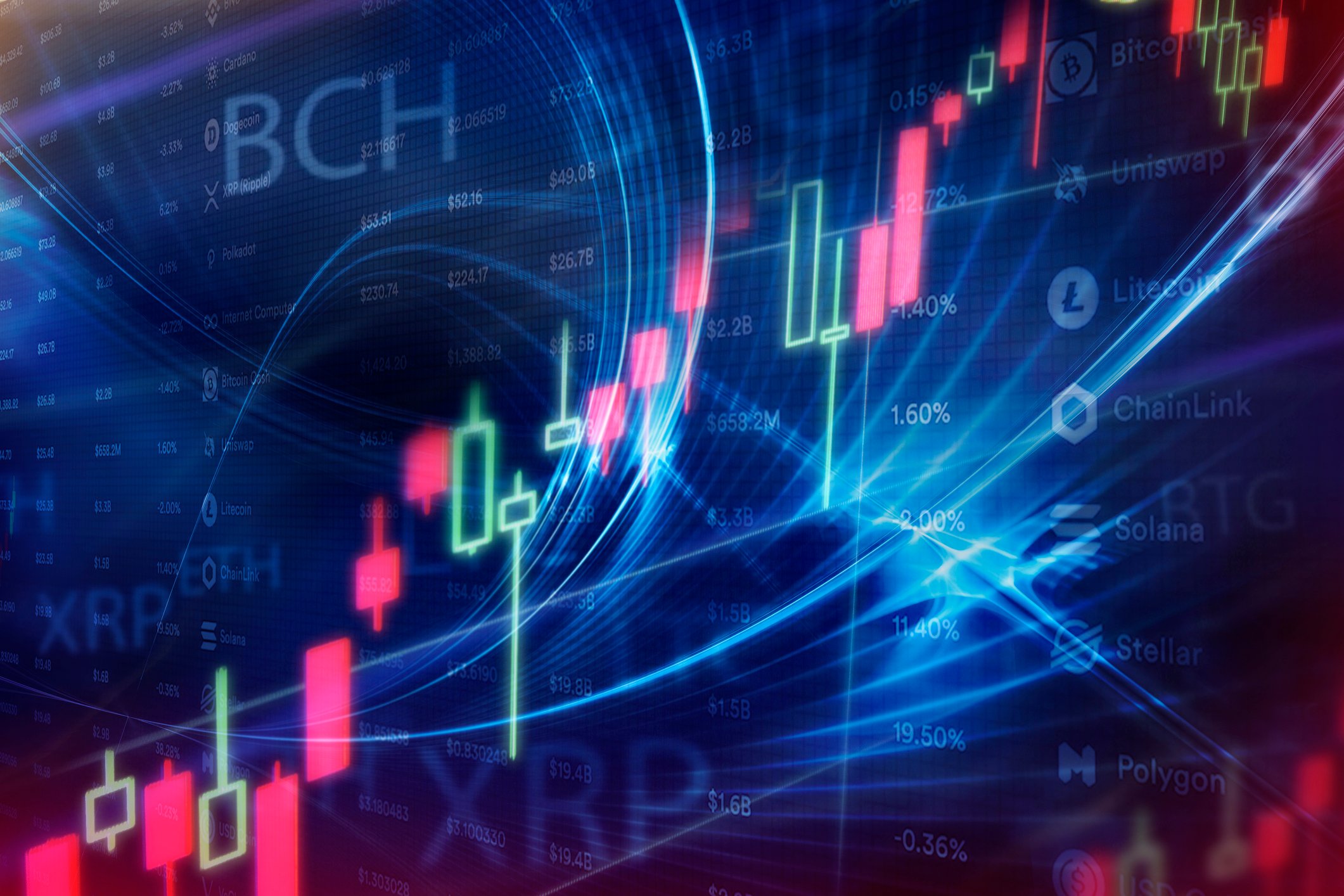Only two cryptocurrencies have ever reached a market cap of $500 billion: Bitcoin (BTC +0.15%) and Ethereum (ETH 0.27%). Most are nowhere near that milestone, but considering how much the crypto market has grown, other coins could get there sooner than you'd think.
In five years' time, I expect Solana (SOL 0.26%) to have surpassed $500 billion. It's the fifth-largest cryptocurrency at the time of this writing (July 21) and has a market cap of about $109 billion. It will need to gain nearly 360%, but with the technology behind it and a growing user base, Solana is ready for a serious bull run.

Image source: Getty Images.
It all starts with performance
There's no shortage of blockchain platforms with smart contract functionality, where developers can build decentralized apps (dApps) and launch new crypto tokens. Solana's calling card has always been that it's a high-performance blockchain capable of faster transaction processing than the competition.
That was the case when Solana launched in 2020, and it's still the case today. Here are the five fastest blockchains by transactions per second (TPS) according to Chainspect data from July 21.
|
Blockchain |
Real-Time TPS (July 21) |
Max Theoretical TPS |
|---|---|---|
|
Solana |
1,505 |
65,000 |
|
ICP |
1,160 |
209,708 |
|
BNB |
114 |
2,222 |
|
Stellar |
106 |
2,032 |
|
Base |
100 |
1,429 |
Data source: Chainspect (July 21, 2025)
Solana's biggest competitor, Ethereum, ranked No. 16 with 21 TPS and a theoretical max of 119 TPS.
Transaction fees on Solana are also extremely low, currently costing less than $0.005. Although it's important for blockchains to have low transaction costs, this isn't a distinguishing factor like Solana's processing speed. Other blockchains have achieved similarly cheap fees.
But how does Solana outperform every other blockchain at processing transactions? Like many other blockchains, Solana uses a proof-of-stake validation method, where transactions are approved by validators who have staked their SOL tokens. Solana combines proof of stake with its own unique innovation, proof of history, that adds timestamps to blocks of transactions. With this extra piece of information, it's possible to validate transactions much faster.
Cryptocurrency values are largely tied to the number of people using their blockchains. Solana's speed gives it a competitive advantage over other blockchains, and we're seeing the results in a few notable areas recently.
Developers, DeFi, and real-world assets
One way to gain insight into the growth potential of a blockchain is to track the number of developers it has. The Solana Virtual Machine (SVM) has 1,030 full-time developers, meaning developers who committed code at least 10 days out of the month, according to Electric Capital. It's second behind Ethereum, which has 3,835.
However, these two blockchains are moving in opposite directions. Solana's full-time developer count has increased by 21% in the last year, whereas Ethereum's has fallen by 16%. Solana was also the top ecosystem for new developers in 2024.

CRYPTO: SOL
Key Data Points
Another area where Solana has been growing rapidly is in decentralized finance (DeFi) services. Over the last year, the total value locked (TVL) into DeFi applications on Solana has more than doubled, from $5.1 billion to $10.5 billion, according to DeFiLlama. It's also the No. 1 blockchain with $192.6 million in app revenue over the last 30 days, an indicator of high activity on Solana.
There's one new part of DeFi, in particular, that could be a huge tailwind for Solana: tokenized real-world assets (RWA). These are digital tokens representing real financial assets, most often stocks that are reportedly backed 1-to-1 by actual shares. So, investors can now invest in tokenized shares of Tesla, Nvidia, and dozens of other popular stocks on Solana.
We're still in the early stages of tokenized RWA, with the total value on Solana currently sitting at $536 million. More impressive is that Solana already has over 60,000 RWA holders, and the number has gone up by 729% over the last 30 days.
Favorable market conditions could send Solana soaring
Cryptocurrency has never been more mainstream. The White House announced the creation of the U.S. Digital Asset Stockpile in March, and Solana is one of the cryptocurrencies President Trump has suggested for inclusion. The U.S. passed the Genius Act, the first major crypto legislation, earlier this month.
Investing in Solana could get even easier, too. Prediction markets put the odds of the first spot Solana ETF approval this year at 99%. Bitcoin ETFs, which were approved in January 2024, have already received about $55 billion in inflows to date. Ethereum ETFs, first approved in July 2024, are at nearly $8 billion.
I think everything's lining up for Solana to take off and reach $500 billion in value. It has a strong foundation, impressive growth numbers, and ETF approval could bring in more institutional investors. A 360% return in five years is lofty, but certainly not unrealistic for a cryptocurrency. Bitcoin has done better than that over just the last three years.
That said, the crypto market, including Solana, is risky. Even though I'm bullish on Solana, it still only makes up a small part of my investments, and I'd recommend keeping most of your money in safer assets.







